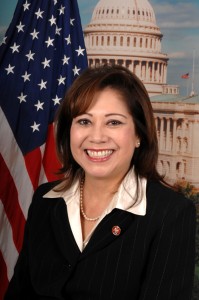Nonfarm payroll employment continued to trend up in October (+80,000), and the unemployment rate was little changed at 9.0%, the US Bureau of Labor Statistics reported today. Employment in the private sector rose, with modest job growth continuing in professional and businesses services, leisure and hospitality, health care, and mining. Government employment continued to trend down.
Household Survey Data
Both the number of unemployed persons (13.9 million) and the unemployment rate (9.0%) changed little over the month. The unemployment rate has remained in a narrow range from 9.0 to 9.2% since April.
Among the major worker groups, the unemployment rate declined for blacks (15.1%) in October, while the rates for adult men (8.8%), adult women (8.0%), teenagers (24.1%), whites (8.0%), and Hispanics (11.4%) showed little or no change. The jobless rate for Asians was 7.3%, not seasonally adjusted.
In October, the number of long-term unemployed (those jobless for 27 weeks and over) declined by 366,000 to 5.9 million, or 42.4% of total unemployment.
The civilian labor force participation rate remained at 64.2% in October, and the employment-population ratio was little changed at 58.4%.
The number of persons employed part time for economic reasons (sometimes referred to as involuntary part-time workers) decreased by 374,000 to 8.9 million in October. These individuals were working part time because their hours had been cut back or because they were unable to find a full-time job.
In October, 2.6 million persons were marginally attached to the labor force, about the same as a year earlier. (The data are not seasonally adjusted.) These individuals were not in the labor force, wanted and were available for work, and had looked for a job sometime in the prior 12 months. They were not counted as unemployed because they had not searched for work in the 4 weeks preceding the survey.
Among the marginally attached, there were 967,000 discouraged workers in October, a decrease of 252,000 from a year earlier. (The data are not seasonally adjusted.) Discouraged workers are persons not currently looking for work because they believe no jobs are available for them. The remaining 1.6 million persons marginally attached to the labor force in October had not searched for work in the 4 weeks preceding the survey for reasons such as school attendance or family responsibilities.
Establishment Survey Data
Total nonfarm payroll employment continued to trend up in October (+80,000). Over the past 12 months, payroll employment has increased by an average of 125,000 per month. In October, private sector employment increased by 104,000, with continued job growth in professional and business services, leisure and hospitality, health care, and mining. Government employment continued to contract in October.
Employment in professional and business services continued to trend up in October (+32,000) and has grown by 562,000 over the past 12 months. Within the industry, there have been modest job gains in recent months in temporary help services and in management and technical consulting services.
Employment in leisure and hospitality edged up over the month (+22,000). Since a recent low point in January 2010, the industry has added 344,000 jobs.
Health care employment continued to expand in October 2011 (+12,000), following a gain of 45,000 in September. Offices of physicians added 8,000 jobs in October. Over the past 12 months, health care has added 313,000 jobs.
In October, mining employment continued to increase (+6,000); oil and gas extraction accounted for half of the increase. Since a recent low point in October 2009, mining employment has risen by 152,000.
Manufacturing employment changed little in October 2011 (+5,000) and has remained flat for 3 months. In October, a job gain in transportation equipment (+10,000) was partly offset by small losses in other manufacturing industries.
Within retail trade, employment increased in general merchandise stores (+10,000) and in motor vehicle and parts dealers (+6,000) in October. Retail trade has added 156,000 jobs over the past 12 months.
Construction employment declined by 20,000 in October, largely offsetting an increase of 27,000 in September; both over-the-month changes largely occurred in nonresidential construction. Employment in both residential and nonresidential construction has shown little net change in 2011.
Employment in other major private-sector industries, including wholesale trade, transportation and warehousing, information, and financial activities, changed little in October.
Government employment continued to trend down over the month (-24,000), with most of the October decline in the non-educational component of state government. Employment in both state government and local government has been trending down since the second half of 2008.
The average workweek for all employees on private nonfarm payrolls was unchanged at 34.3 hours in October. The manufacturing workweek rose by 0.2 hour to 40.5 hours, and factory overtime remained at 3.2 hours. The average workweek for production and nonsupervisory employees on private nonfarm payrolls edged up by 0.1 hour to 33.7 hours in October.
In October, average hourly earnings for all employees on private nonfarm payrolls increased by 5 cents, or 0.2%, to $23.19. This increase followed a gain of 6 cents in September. Over the past 12 months, average hourly earnings have increased by 1.8%. In October, average hourly earnings of private-sector production and nonsupervisory employees increased by 3 cents, or 0.2%, to $19.53.
The change in total nonfarm payroll employment for August was revised from +57,000 to +104,000, and the change for September was revised from +103,000 to +158,000.








Vision Payroll